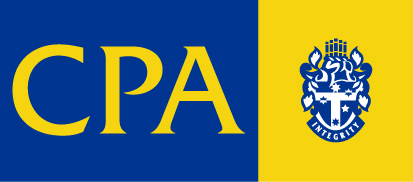Structuring Your Business – The Pros and Cons
Rede Accountants Gold Coast, Brisbane & Byron Bay
Business Establishment /Business Setup– Pros and Cons.
When structuring your business you have 4 main choices:
- Company
- Trust
- Sole trader
- Partnership
So which is the best option when structuring your business? Everyone’s circumstances are different. There is no ‘one answer’.
Let’s consider some criteria that may help you make a decision.
Personal Asset Protection (Such as your home!!!)
Sole traders and partners have NO personal asset protection from their business. All their assets are exposed to their business creditors and suppliers and banks. For example, your home.
Business is conducted in their personal names. That means business debts are created in their personal names. If a bank or a supplier issue legal action against the business, the action also relates to all personal assets owned.
Companies, on the other hand, are separate legal entities from their Shareholders (owners ) and directors (controllers). Creditors can still take action against companies however it is to the extent of the company assets. There are some situations where creditors may successfully sue directors.
Trusts operating in business would usually appoint a company as the trustee (day to day controller). Anyone taking action against the trust is, therefore, taking action against the company. The same comments apply as for a company.
Taxation and flexibility.
There is no taxation flexibility for sole traders and partners. They are taxed on their specific share of the business profits. For example, a sole trader is taxed on 100% of business profits.
A partner may be taxed on 50% (or another amount depending on how many partners there are) of business profits. The amount of tax depends on the level of business profits and the partner ’s marginal tax rate.
Smaller companies now have a tax rate of 27.5% of business profit. This is often a better tax rate than for sole traders and partners. The ‘kicker’ can be if shareholders wish to draw dividends. The dividend will be taxed in the name of the shareholder.
Family trusts usually have discretionary powers for profits to be allocated amongst different family members so as to achieve optimum taxation rates. Typically, this provides the most flexible taxation option of the four structures.
Ease of use, understanding and ‘redtape’.
These days most business structures experience substantial ‘red tape’. It seems to be a fact of business life. This includes ongoing obligations such as lodging and paying GST and wages, Workcover payment and reporting for employees, superannuation payments and reporting for employees, Occupational Health and Safety, Fair Work and many more things.
Partnerships and sole traders probably experience the least amount of ‘red tape’ and are easy for most people to understand how they operate. However, they can employ staff and experience ‘redtape” like other business structures.
Companies are also easy to use and are commonly known to the public. They probably experience more ‘red tape’ than the other structures, mainly in relation to the regulator, ASIC. For example, they must complete an annual declaration and pay an annual fee, maintain various registers and notify ASIC of any changes of directors, shareholders, addresses.
Trusts are relatively easy to operate. There is ‘red tape’ in that often a company is the trustee. The controllers, therefore, have most of the ongoing obligations companies have. These structures are probably the least understood of the four options.
Initial and ongoing administration costs.
Sole traders are the cheapest and most cost-effective. For example, no written operating agreement may be needed and there are no ongoing annual obligations unique to sole traders. The annual costs are for accounting and taxation.
Partnerships incur some additional costs. This may include preparation of a partnership agreement. An annual partnership tax return is required to be prepared and lodged.
Companies are probably the most expensive to establish and operate. The company must be registered with ASIC after preparation of various required documents. There may also need for legal agreements between shareholders. Ongoing, an annual tax return is required and ASIC has ongoing annual and regular obligations, all of which costs money.
Trusts are not as expensive as companies to establish. However, often a company is also required and adds to the initial set up costs. Ongoing they require an annual tax return. If there is a company, ongoing ASIC obligations apply as discussed.
Capital gains tax if the business is sold.
Other than a company the other 3 options provide generous capitals gains relief for businesses that have sales of less than $6 million per annum.
Companies, on the other hand, are not as effective for capital gains tax minimisation.
In summary, when structuring your business there is no one solution. You should see your accountant before you go into business, or even if you are in business. Along with a legal adviser, an accountant can taylor a business structure for your specific needs.
If you would like some advice on structuring your business, get in touch with us here.




